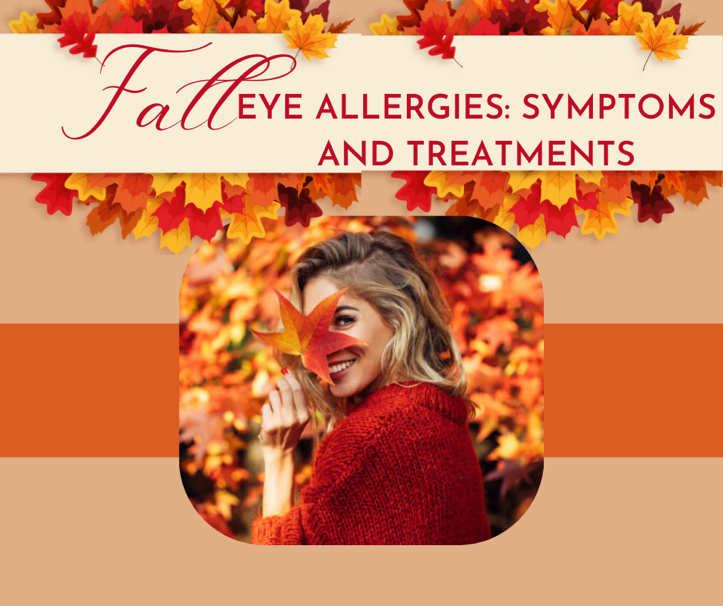Home » Blog » FALL EYE ALLERGIES: SYMPTOMS AND TREATMENTS
FALL EYE ALLERGIES: SYMPTOMS AND TREATMENTS
Posted by: Georgia Eye Partners in Eye Health

This week is when the seasons change, and we say goodbye to summer and welcome the first day of Fall. Fall is a beautiful time of year to see the beautiful leaves change. The days and nights get cooler, so it’s time for many to deal with eye irritation due to fall allergies. Did you know that Fall is one of the worst times for people suffering from allergies? Most people think spring is the only time the eyes become itchy, red and experience allergic discomfort, but Fall can trigger just as intense symptoms. If your eyes itch during the Fall season, are red, tearing, or burning this Fall, you may have a condition that affects millions of Americans. Many people will treat their nasal allergy symptoms but ignore their itchy and watery eyes.
What Are Fall Eye Allergy Triggers?
- Outdoor allergens that significantly affect the eyes during the Fall season are ragweed, which releases pollen that can travel for hundreds of miles on the wind. Also, grass pollens in certain areas in the United States can trigger seasonal allergies because certain grasses pollinate throughout multiple seasons.
- In September and October, indoor allergy triggers include mold produce spores that can spread through the air. Molds form on logs, moss, wet leaves, grass and thrive in damp areas such as bathrooms, kitchens, and basements.
- Dust mites can live in pillowcases, carpets, mattresses, cushions, and furniture upholstery.
Tips For Reducing Common Allergens
- Before turning on your heat for the first time, clean your heating vents and change the filter. Mold and dust mites can get trapped in the vents over the summer and will fill the air as soon as you start the furnace.
- Use a dehumidifier to keep your air at between 35% and 50% humidity.
- When the ragweed pollen is at its peak in the morning, keep the windows and doors closed.
- Wear protective goggles when raking fall leaves to protect your peepers from the plant material, and wear a mask, so you do not breathe in mold spores.
How To Manage Symptoms?
Your allergies may not be preventable, but managing your symptoms, can reduce your Fall eye allergies’ irritating and painful symptoms. Proper eye care is vital for treating allergy symptoms. If you think you may be suffering from Fall eye allergies, contact your eye doctor for more treatment options and tips.
Thank You For Trusting Us With Your Eye Health!

References: American Academy of Ophthalmology, American Optometric Association, and the National Eye Institute. This blog provides information and discussion about eye health and related subjects. The content provided within this blog and any linked materials are not intended and should not be considered medical advice. If the reader or any person has a medical concern, they should consult with an appropriately licensed physician.